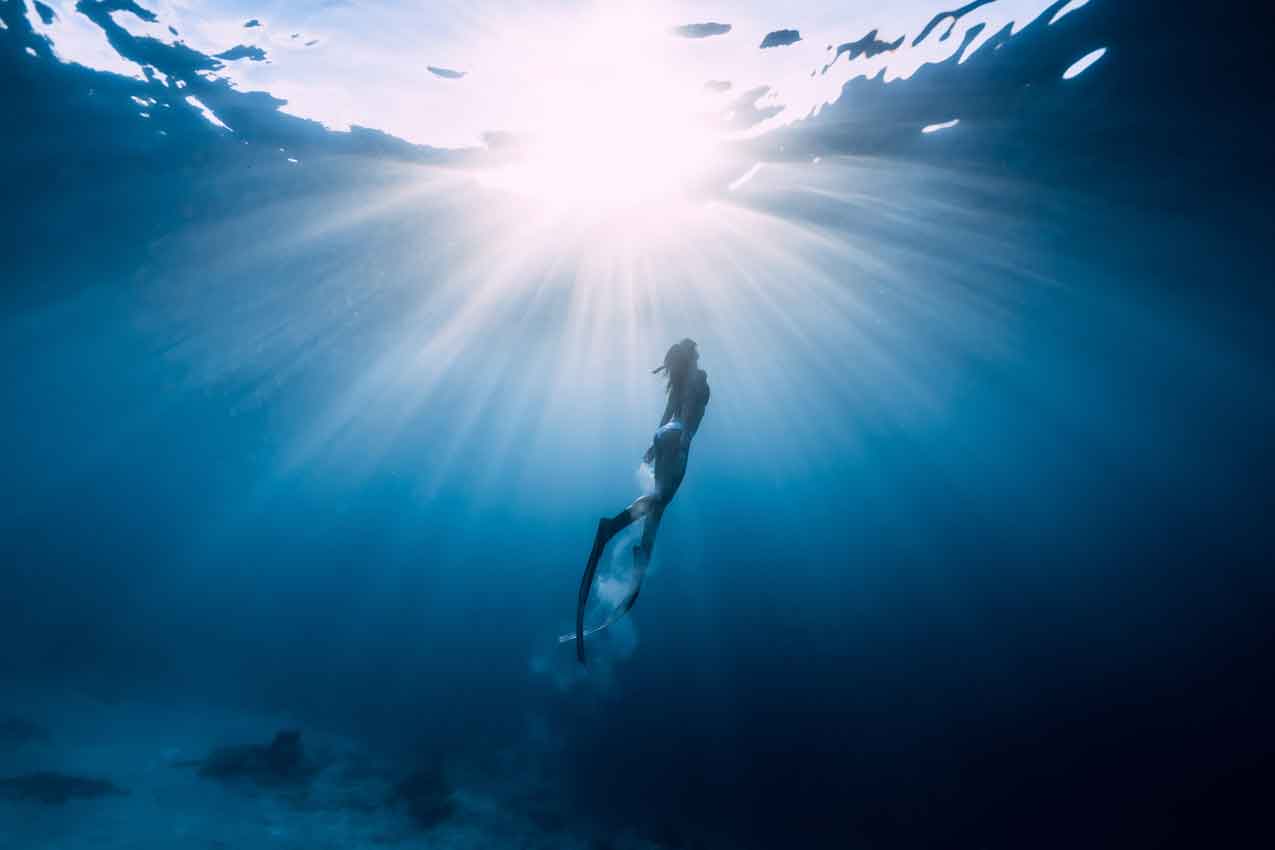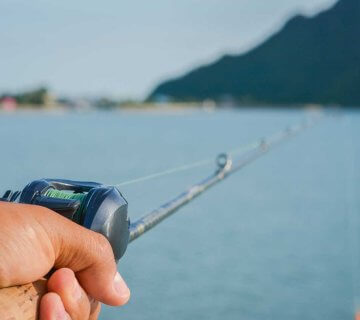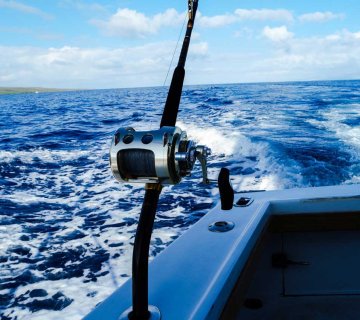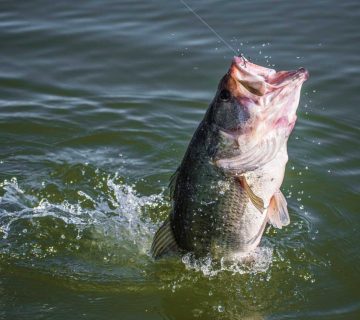Snorkeling in Miami’s coastal waters offers an incredible opportunity to explore vibrant coral reefs and diverse marine life just off the shores of the Magic City. This guide covers everything from choosing the right gear to finding the best snorkeling spots in Miami; discover the best snorkeling safety tips to help you make the most of Miami’s underwater world.
Understanding Miami’s Coastal Waters
Miami’s warm, clear waters are inviting, but they also come with considerations that make snorkeling safety a top priority. The ocean is unpredictable; conditions can change quickly with shifting tides, weather, and currents. Even experienced swimmers need to respect the sea’s power and be aware of their surroundings at all times. Most snorkeling accidents are preventable with proper precautions.
For instance, something as simple as a panic attack or a moment of fatigue in the water can become dangerous if you’re not prepared. Moreover, many snorkeling safety tips are about protecting both you and the marine environment. Following these guidelines will prevent injuries and preserve the reef for others.
Gear Up Before Diving!
Having the right equipment can improve your experience. This plays a significant role in snorkeling safety by preventing common issues like leaks, fatigue, etc. Here’s the essential gear you need and some snorkeling tips on using it effectively:

Snorkel Mask
Your mask is your window to the underwater world. Ensure it fits your face snugly with a good seal to prevent water leakage. A leaking mask can be a significant annoyance and safety hazard if you constantly fuss with it. Test the fit by placing the mask on your face without using the strap, inhaling gently through your nose, and see if it stays suctioned. If it does, you’ve got a good fit. Also, defog drops or a bit of baby shampoo on the mask lens to keep it from fogging up mid-snorkel.

Snorkel Tube
There are a few types of snorkels, but a dry-top snorkel is highly recommended for Miami’s waters. Dry-top snorkels have a valve that keeps water out even if a small wave splashes over you. This makes it easier to breathe without ingesting water. Practice breathing through your snorkel in shallow water first; bite gently on the mouthpiece and take slow, steady breaths. If any water does get in, learn to blast it out by exhaling sharply or use the purge valve if your snorkel has one.

Swim Fins
Fins aren’t just for going faster; they are a critical safety tool. Wearing fins gives you more power and efficiency in the water, which means you can swim with less effort and handle currents more easily. It’s “recommended to wear swim fins in the water” because they allow you to move easily, limit physical effort, and help you get out of moderate currents.

Flotation Device
A flotation aid can be a lifesaver, especially if you’re not a strong swimmer or plan to snorkel for an extended time. A snorkeling vest is an inflatable jacket that provides buoyancy while still allowing you to face down in the water. Even for confident swimmers, a vest or life jacket is bright for safety; it helps you stay afloat with less effort and can be a backup if you unexpectedly get tired.
Top Snorkeling Safety Tips: Stay Safe and Enjoy the Adventure

1. Never Snorkel Alone
Always snorkel with a partner or in a group. Having a buddy means you can watch out for each other and assist in case of cramps, fatigue, or if someone isn’t feeling well. In an unlikely emergency, a buddy can call for help or support you in the water.
Besides, sharing your sightings (like pointing out a passing sea turtle or a school of angelfish) makes the experience more enjoyable! If you’re snorkeling with a tour or charter, the guide effectively becomes your buddy, but still, stay close to your friend or family member during the swim. Remember, “always snorkel with a buddy,” and keep an eye on each other.

2. Know Your Limits and Snorkel Within Them
Snorkeling is easy, but that doesn’t mean you should push beyond your comfort zone. Start in calm, shallow waters and gradually build confidence if you’re a beginner. Even strong swimmers must be honest about their endurance.
Fatigue can set in faster than you think, especially under a hot sun or if there’s a current. Don’t be afraid to take breaks. If you feel tired, cold, or uncomfortable, signal to your buddy, float, or head back to shore/boat. Do not attempt deep free dives or strenuous underwater antics unless you’re trained in freediving; holding your breath and diving down can be risky without proper training (it can lead to blackouts if done incorrectly). Miami’s reefs are mostly shallow enough to see plenty from the surface. It’s better to miss out on that one extra photo of a fish than to overexert yourself.
As one snorkeling safety resource emphasizes, “continually assess and respect your limits. ” Remember, you’ll need the energy to swim back after going out.

3. Check Weather and Ocean Conditions Beforehand
This tip can’t be stressed enough: plan your snorkel around the weather and sea state. Before you head out, look up the day’s marine forecast and observe the ocean for a few minutes. In Miami, sudden thunderstorms are common in the summer; if you hear thunder, do not go in the water. High winds can cause choppy waves, making snorkeling difficult and reducing visibility by stirring up sand. A completely flat sea is ideal, but also be cautious of deceptively calm surfaces.
Occasionally, a strong current can run even when the water looks calm. If you’re beach snorkeling, talk to the lifeguard about conditions and heed any posted flags. If you’re going out by boat, listen to your captain or guide’s assessment; they may choose an alternate site if conditions are better elsewhere. It’s far better to change plans than to snorkel in unsafe conditions.

4. Be Mindful of Currents
Currents are a natural part of the ocean and can be fun to use wisely. But the key is not to panic if you’re unexpectedly caught in a strong current. For example, rip currents can occur on open beaches in South Florida. If you ever find the water pulling you away from the beach, stay calm, float, and swim parallel to the shore until you’re out of the rip, then angle back to land.
Do not exhaust yourself trying to swim directly against the current’s pull. In general, while snorkeling, periodically look back to check your distance from the boat or shore; you might be drifting without noticing. If you see a gentle current has carried you, turn around sooner rather than later so you aren’t too far out when it’s time to return. Using fins will greatly help handle currents and get back to safety.

5. Stay Hydrated and Take Breaks
Snorkeling under Miami’s sun can dehydrate you quicker than you realize. You might not feel sweating in the water, but you’re still losing fluids. Start hydrating before you even get in. Drink water or an electrolyte beverage beforehand, and keep some water on the boat or in a cooler on the beach for when you come out.
One guide recommends ensuring “you are hydrated before stepping foot in the ocean” because dehydration can make snorkeling much more difficult. Plan to take a rest after 30-45 minutes of continuous snorkeling. Float on your back, sip some water (if you have a water bottle tied to your float or back on the boat), and catch your breath. Regular breaks will keep your energy up and prevent fatigue or heat exhaustion.

6. Practice Safe Breathing
Breathing through a snorkel might feel odd at first. The trick is to take slow, deep breaths. Do not hold your breath for long while surface snorkeling; breathe normally through the tube. Holding your breath can lead to dizziness, and resurfacing still holding your breath can be dangerous if you dive down.
If you ever start feeling short of breath or panicky, lift your head out of the water, remove your snorkel, and take a moment to breathe fresh air slowly until you feel steady again. Panicking in the water is dangerous, so at the first sign of anxiety, take action to calm yourself: float, signal your buddy that you need a moment, and focus on breathing slowly. With time, snorkeling becomes second nature and quite relaxing; many people even describe it as meditative once they get the hang of controlled breathing.

7. Watch Your Surroundings
Snorkeling is such a mesmerizing experience that it’s easy to get lost in what you’re viewing. But remember to look up and around occasionally. Know your location relative to boats, jet ski zones, or reefs. In popular snorkeling spots, keep track of other snorkelers; avoid bunching up too closely and ensure you haven’t strayed too far from the group or your guide. If snorkeling from a beach, stay within marked swimming areas if available, and never snorkel in regions with active boat traffic. If you must cross a boating channel, use a dive flag and tow a buoy for high visibility.

8. No Touching, Chasing, or Feeding Wildlife
One of the cardinal snorkeling tips for safety is to look but not touch. This applies to corals, fish, turtles, sea stars, everything. Corals, for instance, are living animals; touching or kicking them can damage years of growth, and some can sting you. Some reef fish might seem tame, but they can bite if threatened. Never feed fish or toss food in the water to attract them; it can make them aggressive and disrupt their natural behavior.
As a snorkel safety rule, please keep your hands to yourself and enjoy observing the marine life in its natural state. If you’re snorkeling with kids, ensure they understand this rule, too. This will keep you safe and ensure we don’t harm the creatures or the reef. “Avoid touching animals, coral, and plant life”. It’ll simply be better for everyone involved.

9. Avoid Alcohol Before Snorkeling
Snorkeling should be done with a clear head. Alcohol and water sports do not mix. Not only does alcohol dehydrate you, but it also impairs your coordination and judgment, which are critical for staying safe in the ocean. You want to be fully aware of currents, boats, and physical conditions. The same goes for any recreational drugs or certain medications that cause drowsiness. It’s best to save the celebratory drink for after you’re done snorkeling for the day.
As one safety tip bluntly states: “Do not participate in snorkeling if you are under the influence of any drugs or alcohol.” Even the night before, go easy on the tropical cocktails if you have a snorkel trip planned the next morning – a hangover and snorkeling is a recipe for feeling miserable (or getting seasick on the boat). Stick to water and maybe a light snack before snorkeling; you’ll enjoy it much more when fully alert and hydrated.

10. Plan Your Snorkel and Communicate
Before heading out, especially if you’re going without a professional guide, make a plan with your buddy. Decide on signals (thumbs up for “I’m okay/let’s surface,” a waving hand for “come here” or “I need help,” etc.). Agree on a general route or time frame. Having a plan ensures that if you end up out of sight for a moment, the other person has an idea of where you intend to go.
Also, inform someone on land of your plan if you’re beach snorkeling without lifeguards (tell a friend or family member, “We’re going to snorkel off this beach and should be back by X time.”). It’s always good practice that someone on shore knows to look out for you. If you’re on a boat, listen carefully to the briefing from the crew; they will tell you how far you can roam and when to be back on board. Following instructions and communicating clearly with your buddy can preempt many safety issues before they even happen.
Best Snorkeling Spots
One of the exciting parts of snorkeling in Miami is the variety of locations available, from tranquil inshore coves to vibrant offshore reefs. Let’s highlight some of the best snorkeling spots in Miami and places to snorkel in Miami that you won’t want to miss:
- Biscayne National Park
- Key Biscayne
- Miami Beach Reefs
- John Pennekamp Coral Reef State Park
Snorkel Smart for an Unforgettable Miami Experience
Snorkeling in Miami’s coastal waters is an experience, from swimming over coral reefs bustling with life to simply enjoying the crystal-clear shallows of a tropical beach. By now, it should be clear that snorkeling safety tips are not about limiting your fun but enhancing it.
If you’re eager to explore Miami’s underwater wonders without hassles, consider joining a private snorkeling charter. It’s a fantastic way to ensure all equipment is provided, the best spots are chosen for the day’s conditions, and there’s an expert on hand to watch out for you.
At Miami Inshore Fishing Charters, our team offers tailored snorkeling charters where safety and fun are the top priorities. We handle the planning so that you can enjoy the adventure. We’ll equip you with quality gear, take you to beautiful snorkel sites, and keep you safe throughout the trip. With professionals by your side, even non-swimmers or first-timers can comfortably experience Miami’s reefs in a secure environment.




